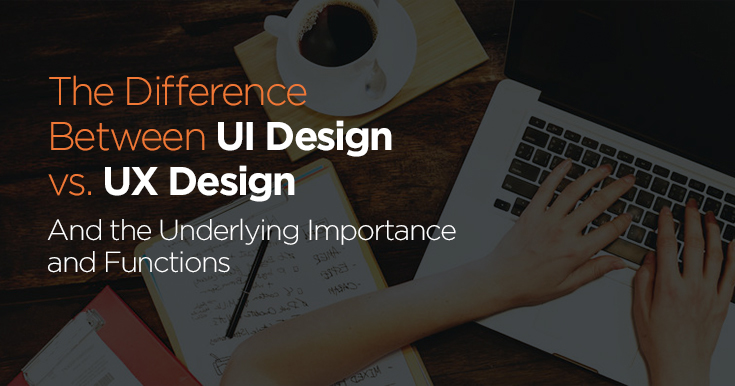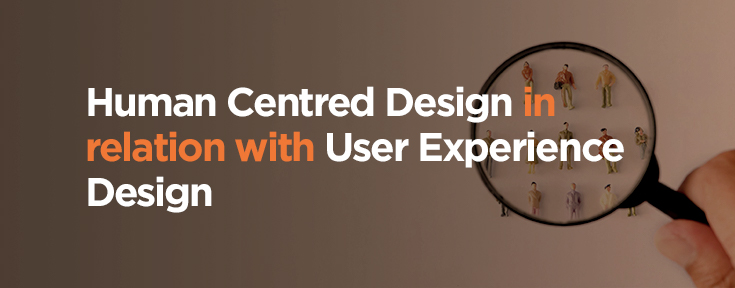The Difference Between UI Design vs. UX Design

Article by Nicole Serrano & Nick Lim
Graphics Design by Frank Cadag
Design is a vague term that comes in a lot of roles and elements with different technicalities and processes.
When referring to the terms ‘User Experience Design’ and ‘User Interface Design’ in the IT industry, people tend to confuse one with the other. While both of them are crucial to creative web design and go hand in hand, there’s a difference when it comes to the design disciplines and their functions.
UI Design is similar to graphic design, where it is mostly associated with visuals. UX Design is the philosophy of designing a user-centric product – aiming to be intuitive, meaningful and enjoyable to provide an enhanced customer experience.
How does UI Design correlate with UX Design?

A simple analogy that can paint a picture for both is a classroom setting. UI Design refers to the kind of materials used in creating the desks and chairs, the colours of the wall, the type of flooring used, and so on. Whereas, UX Design focuses on how to place the desks and chairs strategically with spacing in between for students to pass, the arrangement of the chairs up to the last row that allows students to still get a good view of the whiteboard and the teacher upfront, and so on.
Let’s further discuss both in detail.
User Interface Design

As mentioned earlier, User Interface Design (UID) is akin to graphic design where it is mostly responsible for illustrating the branding assets of the product through visual representation.
In websites, it is the combination of the content (text, images, videos, etc.) that attracts and engages the viewers. Basically, it is the look and feel of the product. However, there is more to this than meets the eye. While its main focus is to make the product look good, UID requires customer analysis, design research and brand consistency, in order to develop a relevant and attractive outcome.
The UI Designer also works hand in hand with the front-end developer as it deals with how to implement and translate the design to the digital interface. According to Lo Ming Ming of FastCompany, tools of trade usually involved in User Interface Design are Photoshop, Sketch, Fireworks, and Illustrator.
User Experience Design

User Experience Design (UXD) is a term that involves creation and strategy in delivering quality interaction and experience between the customer and the product. It involves a plan that not only deals with the visuals, but for all elements to serve a purpose; in short, creating a meaningful design. This is the process of enhancing customer experience of the product’s usability through a method called “Human-Centred Design” or “Design Thinking”. This includes rigorous research, testing, development and prototyping to achieve the desired results.
Regardless of the medium, whether this is specifically for a website or a mobile app, UX focuses on convenience, accessibility and the purpose of the product. It has to be user-friendly and should provide an enjoyable interaction with the customer.
The UX Designer deals with understanding user pain points, experience mapping, wireframes, prototyping and user testing, with the goal of providing a smooth and memorable experience between the product and the customer. The usual tools of trade for UX Designers include Smartie Market, InVision, Adobe XD, Sketch, Azure, Photoshop, Illustrator, stacks of sticky notes, and endless cups of coffee.
Human Centred Design in relation with User Experience Design

“Design is not just what it looks like and feels like. Design is how it works.” – Steve Jobs
Human Centred Design is a unique approach to solving a problem that considers human experiences in the decision-making process of design. This is about building empathy to understand the user’s perspective, pain points, usage behaviour, likes, dislikes, and so on.
It is in creating solutions for real-world challenges based on the users’ point of view (POV), in order to well accommodate their needs and requirements. Through this kind of thinking, the data and understanding gathered are applied in User Experience Design. Since UXD is focused on creating a product that is convenient and enjoyable for the user, HCD becomes relevant because you are creating solutions that rely on empathy, ideation and experimentation. By doing so, you are able to create strategic solutions to problems that cater to the needs and desires of the users. This is how we create meaningful and intuitive interactions, while optimising user satisfaction.
Top 5 Benefits of Effective UI and UX Design on a Website
1. Clear Vision of the Website’s Purpose

It is essential for a website to be intuitive and enjoyable to use, such that the visitor will seamlessly reach their goals without a hitch. However, in the midst of trying to accomplish a beautiful website, some designers and developers forget the other details that tend to create friction between the product and the visitor. These are the barriers that may frustrate and slow down the users from reaching their desired destination, because of unnecessary pit stops that lie around the website.
In creating a frictionless website, the designer must develop a deeper knowledge on the target audience’s behaviour and their goals, and apply it to interactive web design. Upon application of good UID and UXD, you gain a better understanding of the website and its purpose. A few things to take note of in achieving this is having consistency in the design, clutter-free and easy-to-understand navigation, visual clues to guide users, emphasised key functions and buttons, and more.
Once you’ve reduced the causes that lead to bad friction in your website, this will lead to a smoother and clearer interaction between the user and your product.
More about frictionless experience in design here.
2. Drive Qualified Traffic

In every website, one common goal is to make money. In order to do so, you invest in online strategies for search engine visibility, but you also need to optimise your website such as it creates an enjoyable, intuitive and meaningful experience for your customers. This is where the combination of UX and SEO comes in.
Customers have high expectations when it comes to searching for what they want or need online. SEO deals with building brand awareness for your website, through organic efforts like keywords and meta-tags, to appear on top of search engine results. However, it is websites that have invested in good UX that get the customers to stay and engage your brand.
As a result, it is efficient to know that both these two work hand in hand to drive qualified traffic to your site.
More about SEO and UXD’s relationship here.
3. Saves you Money in the Long Run

Rather than resolving issues later when it has already cost your company the time and money, it is better to invest in good UID and UXD right from the start. A great UID with UXD in mind can improve business profitability by decreasing bounce rates and getting users to spend more time on your site. By investing in methods that provide a meaningful and intuitive design, you minimise potential user frustrations that can result in them leaving your site.
User-centric design reduces user frustrations that may result in page bounce rates and lower conversions. For example, if your CTA buttons and navigation are strategically planned and designed well, this can easily lead visitors down your conversion funnel. Essentially, good UXD practices in connection with UID should be developed to ensure ease of usability for customers.
4. Improving Perceived Quality and Trust of the Brand

Branding is quickly and often associated only with logos, colours and the like. Now, people are starting to understand that this is a bigger concept that not only serves as an identifying mark, but also communicates a particular brand promise on all platforms.
By knowing the brand objectives, this can be applied in creating the best user experience possible. It is in branding that there is an organised consistency across the board, while the UX makes it an enjoyable experience for the customers. When UX is effectively applied and aligned with the brand promise and objectives, it creates a better and more refined branding for the site.
Also read: User Experience and Brand Experience: The Two Sides of the Same Coin?
5. Advancing your Brand in the Competition

UID and UXD leads to a better understanding of the term ‘design’. Cutting-edge practices and solutions involved in this will not only benefit your brand, but the entire industry in the long run. This puts your brand on the top, advancing in the competition.
According to Nudea Hörner of UX Collective, in the rise of design-driven innovation, the focus is in pushing for new meaning and not for new technology.
Designers usually experiment with new trends and approaches in order to create better experiences. This opens opportunities for them to create innovative changes in technology. Such big steps in bringing good change to technology also leads to gaining credibility for your brand.
It’s important to know the differences between UID and UXD to develop awareness on their benefits, in order to provide the best possible experience for your customers. In conclusion, developing a user-centric approach in both is not only good for your users, but for your brand as well. This can increase business profitability, improve website traffic, increase conversion rates and develop trust between the brand and the user.
If you’re interested to know more about this topic and what UID and UXD can do for your business, give us a ring at +91 8125384824 or email us at enquiry@zepocommerce.com.
